Saint Andrew and the Cross
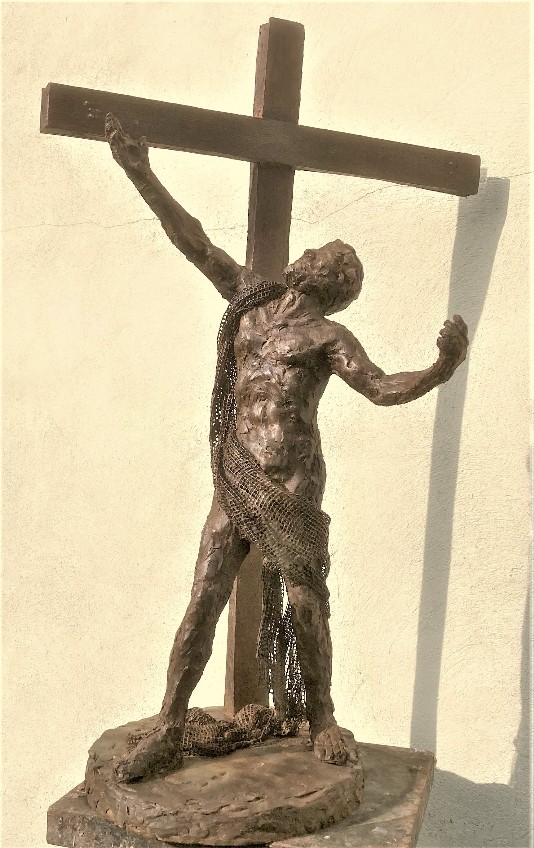
Saint Andrew's Church in the village of Much Hadham is considering commissioning a sculpture of its patron saint. The church is remarkable in that it is an example of a significant act of ecumenism. During the 1980s, the Anglican vicar, Canon Michael McAdam, offered the use of his church to the Roman Catholics in the village while they were in process of rebuilding a war-time hostel which they had used for worship. After a period of joint usage, it was decided that there should be a permanent sharing of the church edifice through joint ownership, to which the Cardinal Archbishop of Westminster and the Anglican Bishop of St. Albans gave their blessing. The Catholic church is called Holy Cross, so I decided that it would be important to commemorate this rather wonderful act of ecumenism by including the Cross within the sculpture.
Right at the outset, Canon McAdam, now retired but still active in ministry, had suggested that it would be good to depict the joyful moment described in the Gospel of John, when Andrew discovers Christ, and declares, "we have found the Messiah."
My thoughts with regard to the way in which to relate St, Andrew and the cross have been a source of considerable reflection. Originally, I had thought that Andrew should be pointing to the cross as if it represented Christ, but I came to feel that this was unsatisfactory. Although the cross has come to stand as a symbol for redemption, it is not the same as it standing for the Redeemer. Even as a symbol of redemption, I am not really happy about it. The cross, for me, is a gallows, and if it symbolises anything, it is the evil that men can and do inflict on each other. When Andrew discovered the Messiah, he was unaware of the cross which was to come. Therefore, I placed it in the background and not in the same plane as the saint, as a symbol of a future and an evil, of which Andrew in his joy was unaware, but which cannot detract from that joy, which has its own existence and validity. Because the two elements are not in the same plane, it has allowed me to configure them in a triangular, arrow-like form, where both can be seen as pointing in the same direction.
There is an inevitable problem of how we incorporate sin and suffering within the context of belief in a loving God, to which there is no easy answer. In Trollope's Last Chronicle of Barset, the central character makes the following statement:
It is in his perfection as a man that we recognise the divinity of Christ. It is in the imperfections of men that we recognise our necessity for a Christ.
At times such as these, with the invasion of the Ukraine, the recognition of that necessity is of fundamental importance if we are not to give way to despair in the face of suffering and evil. It has become, for me, the meaning behind this sculpture.
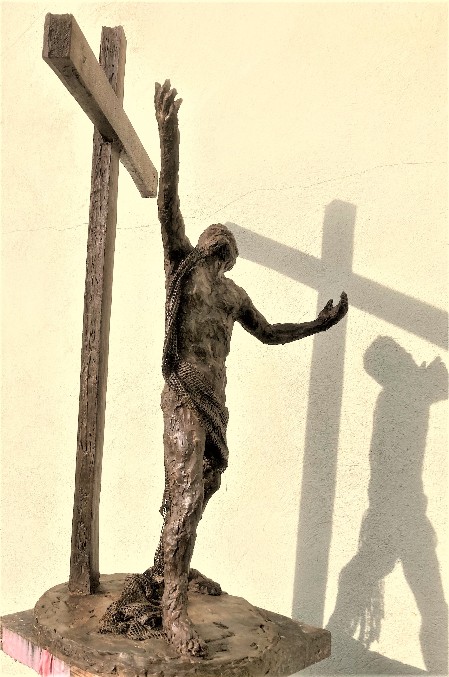
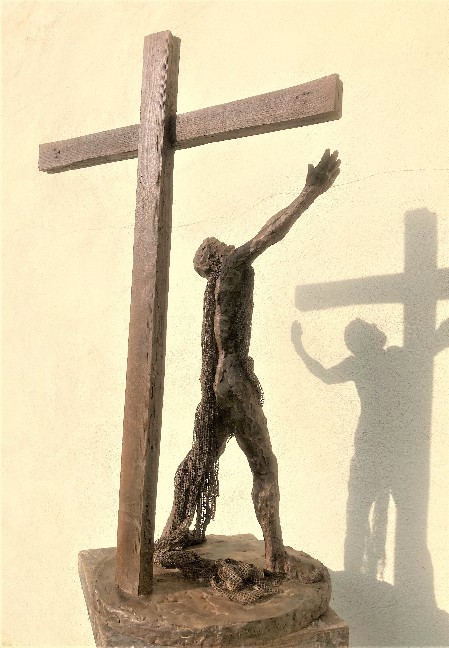
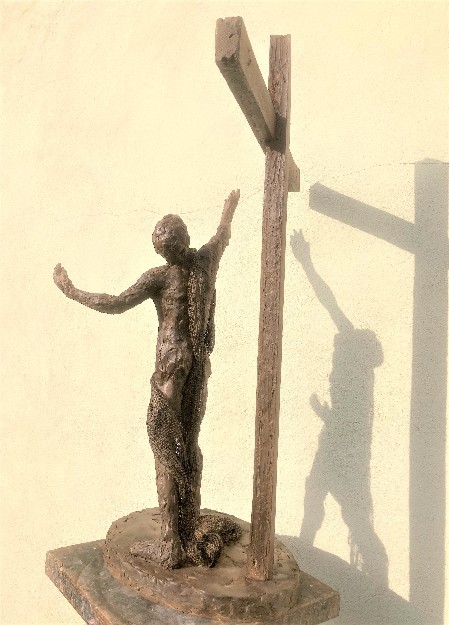
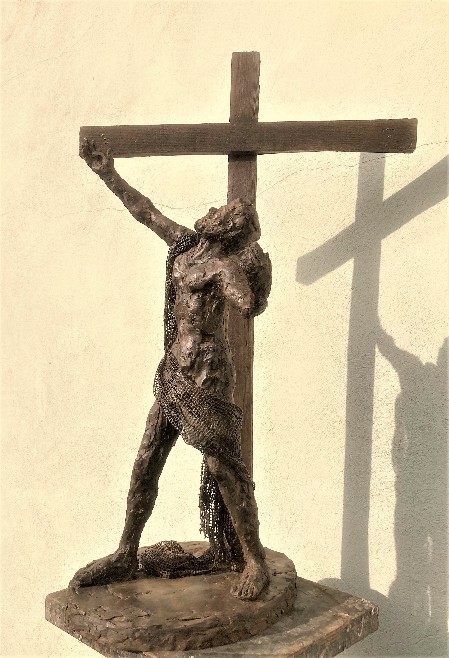
This page will be updated as the commission proceeds. My thanks for their help and support in this project go to the vicar, Revd Stehen Bate, the Chair of the sculpture committe, Judy Waples, and friends both within and beyond the church who have shared their thoughts with me.


